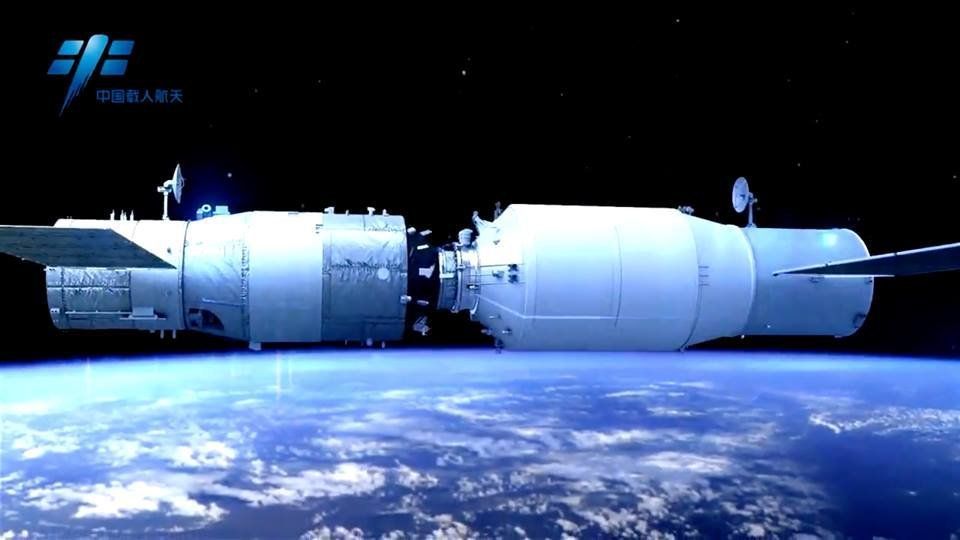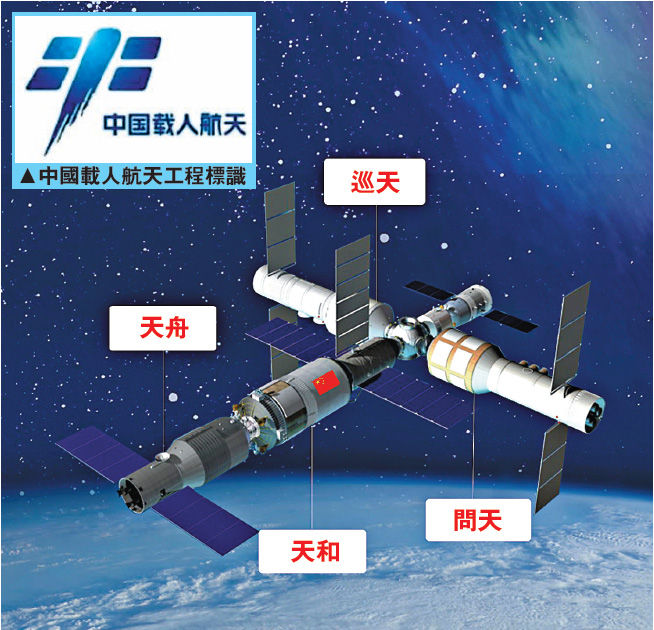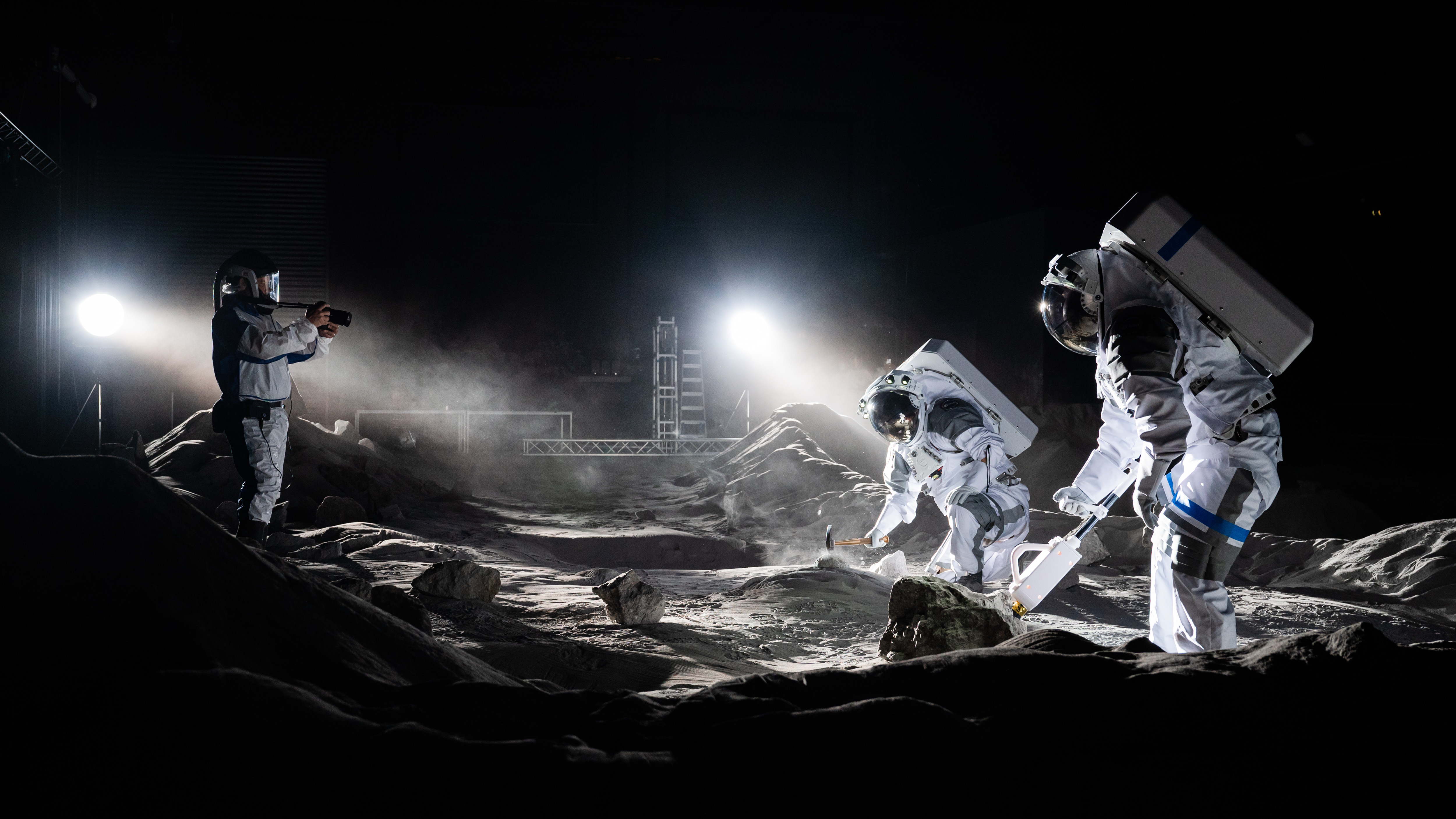
China's Cargo Craft Docks with Space Lab

China's Tianzhou-1 cargo spacecraft performed an automated docking with the country's orbiting Tiangong-2 space lab Saturday (April 22), according to the Beijing Aerospace Command and Control Center.
The robotic Tianzhou-1 was lofted atop a Long March-7 Y2 rocket Thursday evening (April 20) from Wenchang Space Launch Center in southern China's Hainan province.
"Now Tianzhou-1 and Tiangong-2 have formed a rigid, combined unit," Huang Zhen, an engineer with the flight control decision support group at the Beijing Aerospace Command and Control Center, said Saturday. [China's Tiangong-2 Space Lab Mission in Pictures]
"Tiangong-2 has taken over Tianzhou-1's functions," he said during an interview on Chinese news outlet CCTV-Plus. "They used to be two separate spacecraft, so to make them a combined body, we need to properly integrate relevant resources and information. Therefore, we are planning to shut down other functions, like cutting off the power supply to the docking equipment.
"The docking process went very smoothly today," he added. "Now the combined unit is quite stable. As planned, we will make preparations for refueling tomorrow and replenish both fuel and oxidizing agent to the Tiangong-2 space lab."
According to the country's space planners, the cargo ship and Tiangong-2 space lab will carry out two additional dockings.
According to CCTV-Plus, the second docking will be conducted from a different direction — a procedure that aims to test the cargo ship's ability to dock with a future space station from different directions.
Get the Space.com Newsletter
Breaking space news, the latest updates on rocket launches, skywatching events and more!
A third and final docking will use fast docking technology. Whereas it normally takes about two days to dock, fast docking will take only 6 hours. A 29-step refueling script will take place over several days, Chinese officials said.

The Tiangong-2 space lab has been in Earth orbit since Sept. 15, 2016.
Chinese state-run media report that Tianzhou-1 is loaded with roughly 6 tons of goods and propellants. The combination of Tianzhou-1 and Tiangong-2 is expected to fly together for two months, during which time the two spacecraft will conduct in-orbit liquid propellant refueling and carry out various experiments.
Tianzhou-1 is China's largest and heaviest spacecraft, with a length of 35 feet (11 meters), a diameter of 11 feet (3 m) and a weight of 13 tons (12 metric tons).
Though the Tiangong 2 space laboratory (whose name means "Heavenly Palace 2") is currently unoccupied, two Chinese astronauts spent a month there last October. The astronauts' mission, known as Shenzhou-11, lasted 33 days — China's longest-ever piloted space trek.
The Tianzhou-1/Tiangong-2 mission is viewed by China’s space planners as a crucial step toward the country's goal of establishing a permanent space station around 2022.
To see the CCTV-Plus video about the docking, go to:
http://cd-pv.news.cctvplus.com/2017/0422/8048514_Preview_1733.mp4
http://cd-pv.news.cctvplus.com/2017/0422/8048531_Preview_8056.mp4
Leonard David is author of "Mars: Our Future on the Red Planet," published by National Geographic. The book is a companion to the National Geographic Channel series "Mars." A longtime writer for Space.com, David has been reporting on the space industry for more than five decades. Follow us @Spacedotcom, Facebook or Google+. This version of this story was posted on Space.com.
Join our Space Forums to keep talking space on the latest missions, night sky and more! And if you have a news tip, correction or comment, let us know at: community@space.com.

Leonard David is an award-winning space journalist who has been reporting on space activities for more than 50 years. Currently writing as Space.com's Space Insider Columnist among his other projects, Leonard has authored numerous books on space exploration, Mars missions and more, with his latest being "Moon Rush: The New Space Race" published in 2019 by National Geographic. He also wrote "Mars: Our Future on the Red Planet" released in 2016 by National Geographic. Leonard has served as a correspondent for SpaceNews, Scientific American and Aerospace America for the AIAA. He has received many awards, including the first Ordway Award for Sustained Excellence in Spaceflight History in 2015 at the AAS Wernher von Braun Memorial Symposium. You can find out Leonard's latest project at his website and on Twitter.
